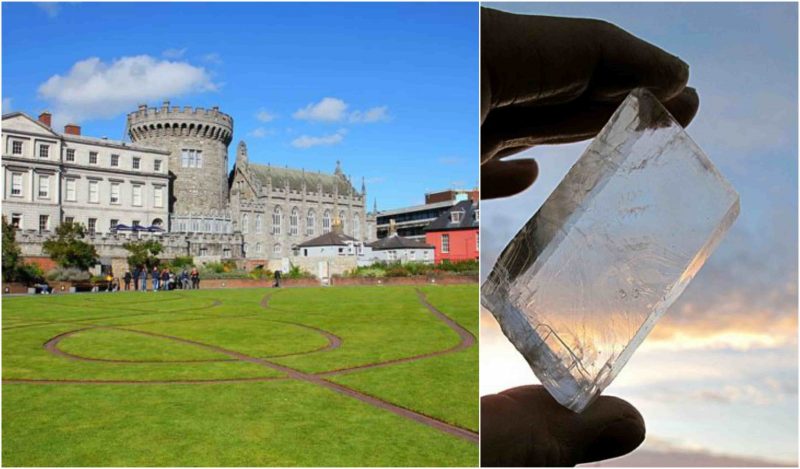- Writing the Ending of Viking sagas.
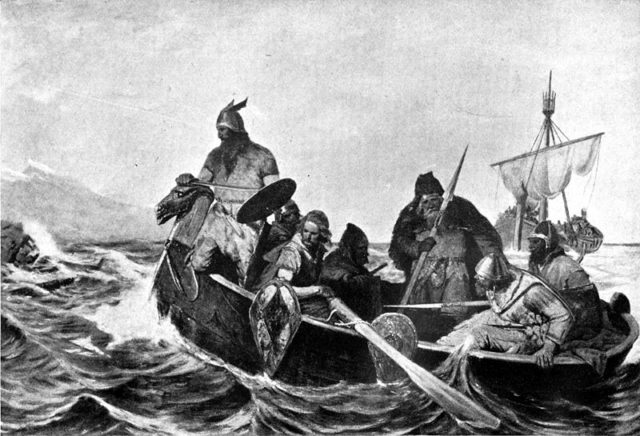
There are two primary sources that we have about the Viking expeditions to the New World: The Saga of Erik the Red and the Saga of the Greenlanders. The information written in these sagas wasn’t put into writing until several hundred years after the fact, so they must be taken with a grain of salt. The information given tells what the Vikings were after when they set out and what they did when they arrived, but not what happened after they left.
The two sagas differ on a few things: for example, they both tell different tales of what happened to Thorfinn Karlsefni. The Greenlanders state that Thorfinn moved to Glaumbaer, Iceland, but Erik the Red claims that he moved back to his original family estate. Until recently, Erik the Red’s account was seen as the more accurate of the two, though new findings are pointing a finger towards the Greenlanders as the better historians.
Researchers found a huge longhouse buried underneath the earth in Glaumbaer, in 2002. The layer of rock around the floor dates the structure to around 1104 A.D. Researchers have determined this by examining discoloration caused by an eruption of Mount Hekla. The longhouse measures 100 feet by 25 feet, which suggests that it was owned by someone very powerful – like Thorfinn Karlsefni. The design of the house is Viking in origin but has the structure of contemporary houses found in places like Newfoundland.
It is not 100 percent certain that Thorfinn owned the longhouse, but the facts do line up with it. According to the tales, Thorfinn and his wife left the New World to settle somewhere in Iceland. It would be an incredible historical achievement to find the settlement where they raised a clan and lived out their days.
-
L’Anse Aux Meadows
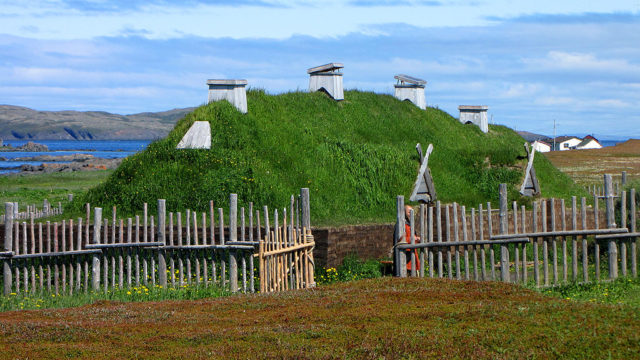
It has also been a long-time debate on who was the first to sail across the Atlantic Ocean. Newfoundland seems to be the front-runner as the oldest European presence in North America (Canada).
The sight is beautiful and well preserved; it also seems like it was used until at least 1500 A.D. The buildings were built in the contemporary style that would be found in Iceland or Greenland. Findings have also shown that it was not only a settlement of the Vikings, but the area may have been used by people as far back as 3,000 B.C.
There are 13 buildings from the Viking era: a forge, eight houses, and what look like four buildings used as workshops. There have been discoveries of domestic items such as nails and buckets along with forged pieces of ironworks. The archaeologists have yet to determine how long Vikings used the settlement or if it was just a seasonal outpost, but it was given the name “Leif Camp” because of its connection to Leif Erikkson.
-
Teeth Filing
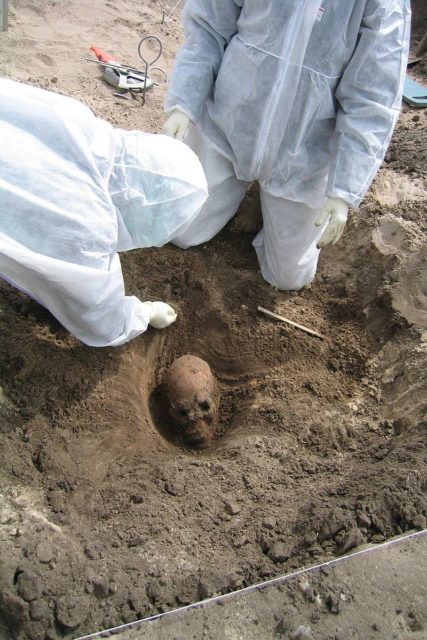
We all know that body modification is not a new idea, but most ancient cultures had tattoos or piercing, the Vikings took it to a whole new level of pain, however. In a mass grave of Viking warriors discovered in Dorset, England, Oxford archaeologists have found that the teeth of the dead soldiers have been filed with patterns in them. The designs were so intricate that they believe it took a craftsman in filing to do it. The process would have been too difficult to do on your own, and most likely too painful as well.
According to the Swedish National Heritage Board, there is an enormous amount of teeth with similar markings in the Viking Cemetery at Kopparsvik, Gotland. The procedure seems to have come into popularity around the 10th century; the etchings are all different and seemed to be up to the person receiving them. Some teeth only have one to two markings while others have up to four. It is not clear whether it was a status symbol, for showing how great of a warrior they were, or intimidation. Archaeologists have also said they most likely would have filled the filings with charcoal or other materials to make them stand out.
-
Sunstones
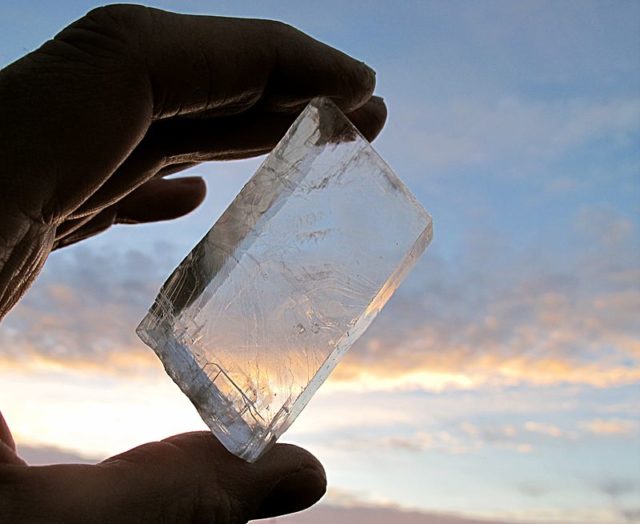
According to legends, Vikings were such amazing sailors that they could locate the sun, even on cloudy days, always capable of navigating by it. This may seem farfetched, maybe even impossible but new findings have shown that it was more likely than you might think.
If you have ever seen the TV series ‘The Vikings’ on the History Channel, then you may have seen something called a Sunstone. This is a crystal called Icelandic spar, and it is what the Vikings used to navigate the seas. When the stone is held up to the light, the Sun will hit it, and the light will react in different ways depending on where the Sun is positioned. They could even do this on cloudy days – though they would have to look a bit harder.
The light is depolarized when it comes into contact with Icelandic spar. If you hold it up to the light and the move it away it creates a visual phenomenon called Haidinger’s brush. The light from the Sun briefly turns into a yellow line and points in the direction of the Sun, even on cloudy days this would be accurate down to one degree.
The only example of Icelandic spar being used in sea voyages that we have found is on a ship from a Spanish Armada that was sunk in 1592 A.D. Even after magnetic compasses had been invented the Icelandic spar was still very useful, especially since other magnetic objects would not interfere with it.
-
Viking Burials
When we think of Viking burials the image that comes to our minds is most likely a warrior laid to rest in a boat, his sword in his hands and then covered by his shield, the ship set ablaze before drifting off into the water where he will then be taken by the Valkyries and escorted to Valhalla. A discovery in the Scottish highlands shows that this is not always the case, however.
The burial site was dated to around the 10th century; it is the final resting place of a Viking who was most likely revered by his companions. Buried with him were his weapons, a drinking horn, a whetstone from Norway, and a pin from Ireland. The artifacts were identified by the iron left behind after the wood had long rotted away. Surprisingly, he was also buried in a traditional Viking boat; it too had decayed, but the indentation and iron rivets that were left were what tipped off archaeologists. Archaeologists have yet to determine what the man was (there are guesses he was a chieftain or maybe a man that was very skilled in navigation) though they are certain this type of burial was only given to the most revered of men.
The Peninsula – much easier to access by sea than by land – was also home to burial sites going as far back as 6,000 years.
-
Viking Establishment of Dublin
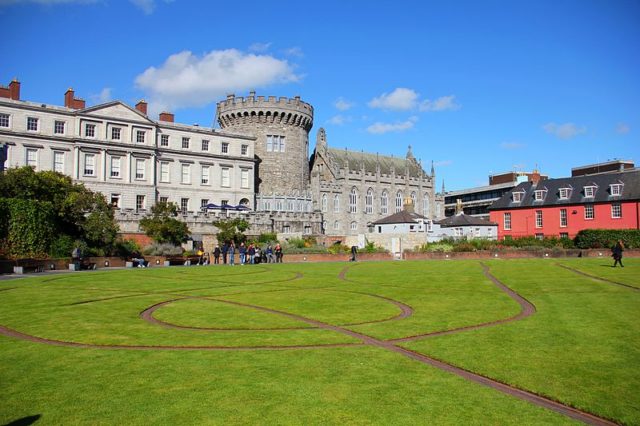
The city of Dublin, Ireland is rich with history and some of that is ancient Viking history. The Vikings settled into what is now Dublin; it must have been paradise on earth compared to the harsh climates they were accustomed to.
Much of Europe and North America was explored by the Vikings, but they eventually settled in Dublin. It would make a perfect winter home with its lush forest cover, mild climate, and river. Here they would also repair their ships and set up a network for trading.
There has been a staggering number of Viking artifacts discovered around Dublin. Temple Lane (which has been called the oldest street in Dublin) was created by Viking settlers. The earliest foundations of Dublin Castle date back to the Viking era, and many swords have been found near Christ Church Cathedral. In an area just south of the River Liffey there is a huge concentration of buildings that seems to be the center of a Viking settlement. The buildings include houses and shops where commodities were made, such as leathers, textiles, and jewelry. There is also evidence of amber-working near the same area.
There have also been more than 50 Viking graves excavated around Kilmainham; the bones show that Vikings from Scandinavia were buried alongside Vikings that lived farther west in Ireland or Scotland.
-
Viking Slaves
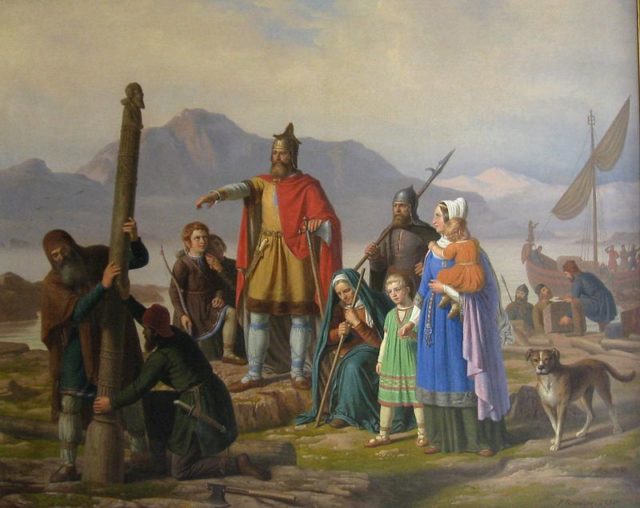
Many believe the Vikings were an egalitarian society where all men and women could be equal: some of the best warriors were shield maidens, who would fight alongside their husbands when they went to war or on raids. But recent excavations have proven this to be false.
While home, Vikings were farmers, working the land but they did not do so alone. When they went on raids, they were hoping to find treasures but were also looking to bring back slaves (called thralls) to use themselves or sell/trade with. Burial sites that were dug around 1015 A.D. had shown that when the Viking died, so did their thralls. The thralls were beheaded and buried with their Viking masters.
There was also a definite class structure which dictated how the thralls lived. The thrall’s diet was mostly fish while the upper class ate more red meats and vegetables. Fish was cheap and plentiful while the meats that the upper class ate had more of a religious and spiritual property.
-
The Strange Planning of Viking Cities
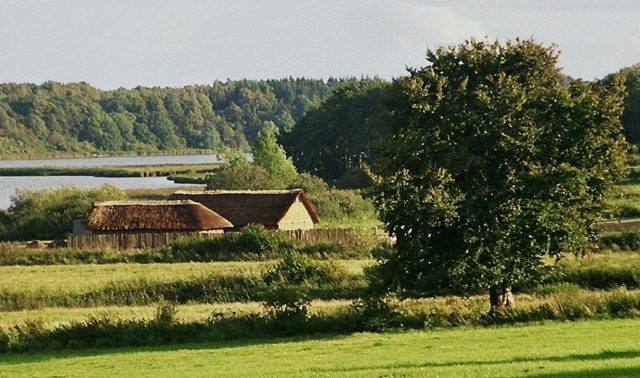
What comes to your mind when you think of ancient or medieval cities? Most likely it is a giant walled city where everyone lived in the walls with the upper class living in a defined space. Well, new findings have shown that the Vikings did things a little different.
The newly discovered town which sits in northern Germany is a stronghold that was once thought only a myth. Sliasthorp was rumored to be where ancient Danish and Viking kings lived, beginning with King Gudfred. The city dates back to around 700 A.D. and was most likely lived in until around 1,000 A.D.
There were about 200 homes at the site, along with all the artifacts you would think you would find including coins and jewelry. There was a 98ft longhouse was used for military purposes. The site housed the rich and powerful of the civilization along with the military. There were no merchants or craftsmen who lived there; all of the lower class lived in nearby Hedeby, is located 2.5 miles away.
Hedeby was founded about 100 years after Sliasthorp; it was a port city and meant to be a trading hub. If you wanted to visit Hedeby, you would have to get permission from those that lived there, showing there was a clear divide between the classes, who were separated by such a distance on purpose. Based on the distance and positions of the cities it was most likely a carefully thought out plan for future urban growth and development.
-
They’re Older than We Thought
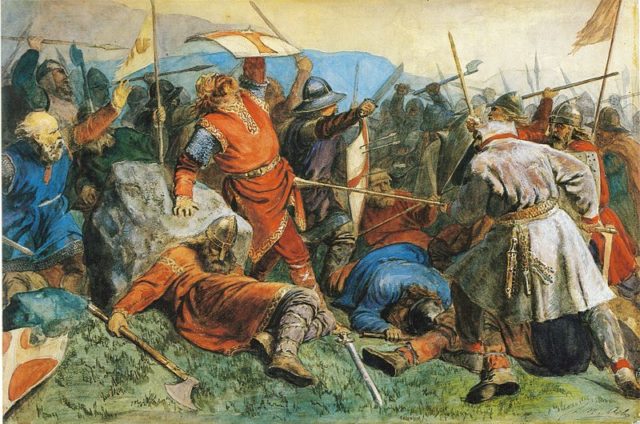
June 8, 793 is the date when the first documented Viking conquest took place; it was the siege of a monastery off the coast of England. A dig on the island of Saaremaa in Estonia suggests that the culture existed a lot earlier than we think.
In a mass grave that held two boats and 33 men, all Scandinavian men and all looking like they had been killed in a failed raid. The site has been dated to around 700 A.D. to 750 A.D., a bit earlier than the attack on the monastery.
They also found the remains of a much larger craft, powered by sails instead of the traditional oars. This would push back the timeline on when the invention of sailing came about, letting us know that the Vikings were the masters of sea travel before we thought they were.
A little of what might have happened was pieced together by archaeologists. They speculate that after sailing 100 miles the Vikings got into a skirmish, and the remaining warriors gathered their dead for what looks like a ceremonial burial. They quickly entombed the bodies with their ships and covered them with their shields, and broke or bent their swords.
-
Contact with Native Americans
Not only did Vikings settle in what is now Canada, but researchers have also found that they have multiple interactions with the Native Americans of the area.
Artifacts have been recovered from the aforementioned L’Anse Aux Meadows and Newfoundland on the other side of Notre Dame Bay. The artifacts were used by the Vikings to light their fires, and since we know that the area was also inhabited by Native Americans, it is logical that the two groups had interactions.
In Iceland, a DNA analysis was taken of a group of families and determined they had a DNA marker that indicates that somewhere in the past, they had a female ancestor of Native American blood. The DNA is unique, so it is very unlikely that it developed in two different parts of the world independently. The marker has been traced back at least 300 years, meaning that most likely the Vikings brought a Native American woman with them when they returned home.
